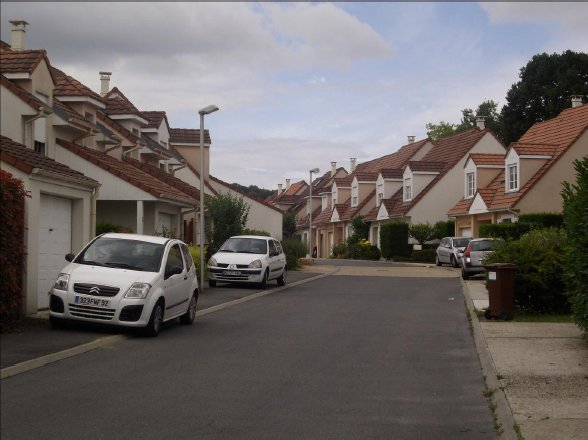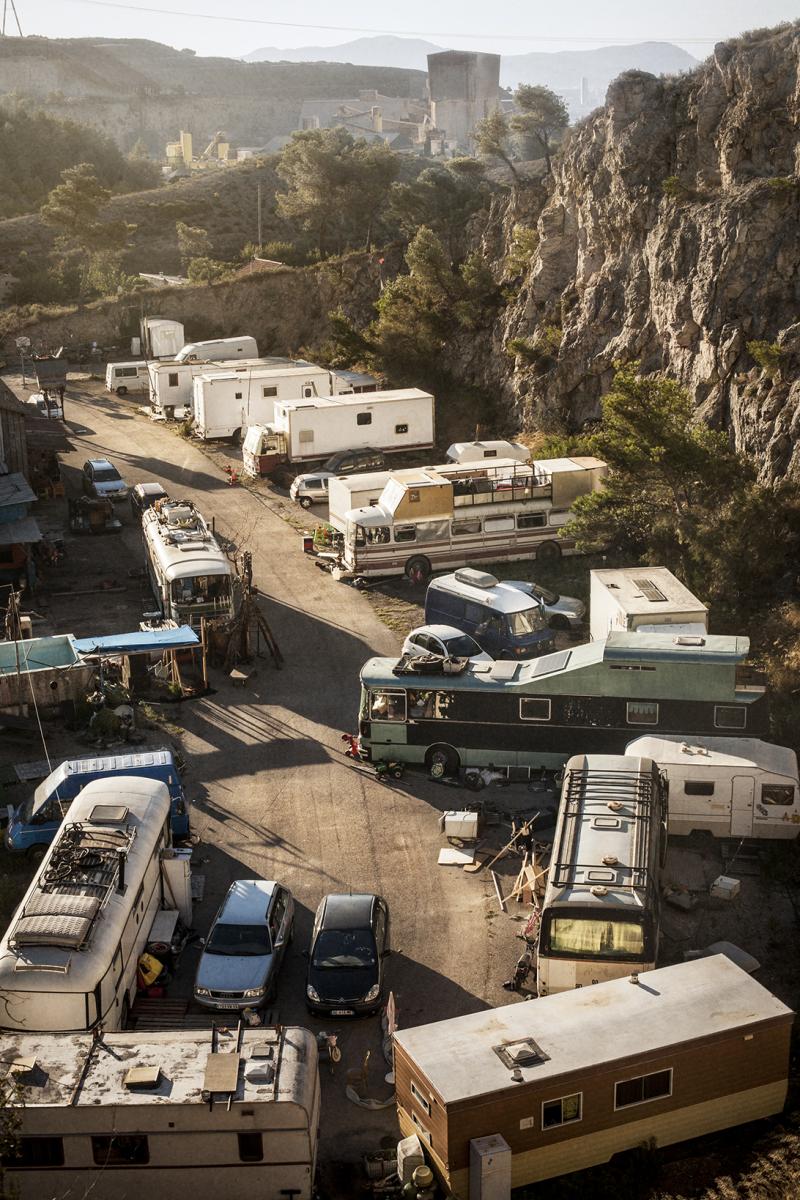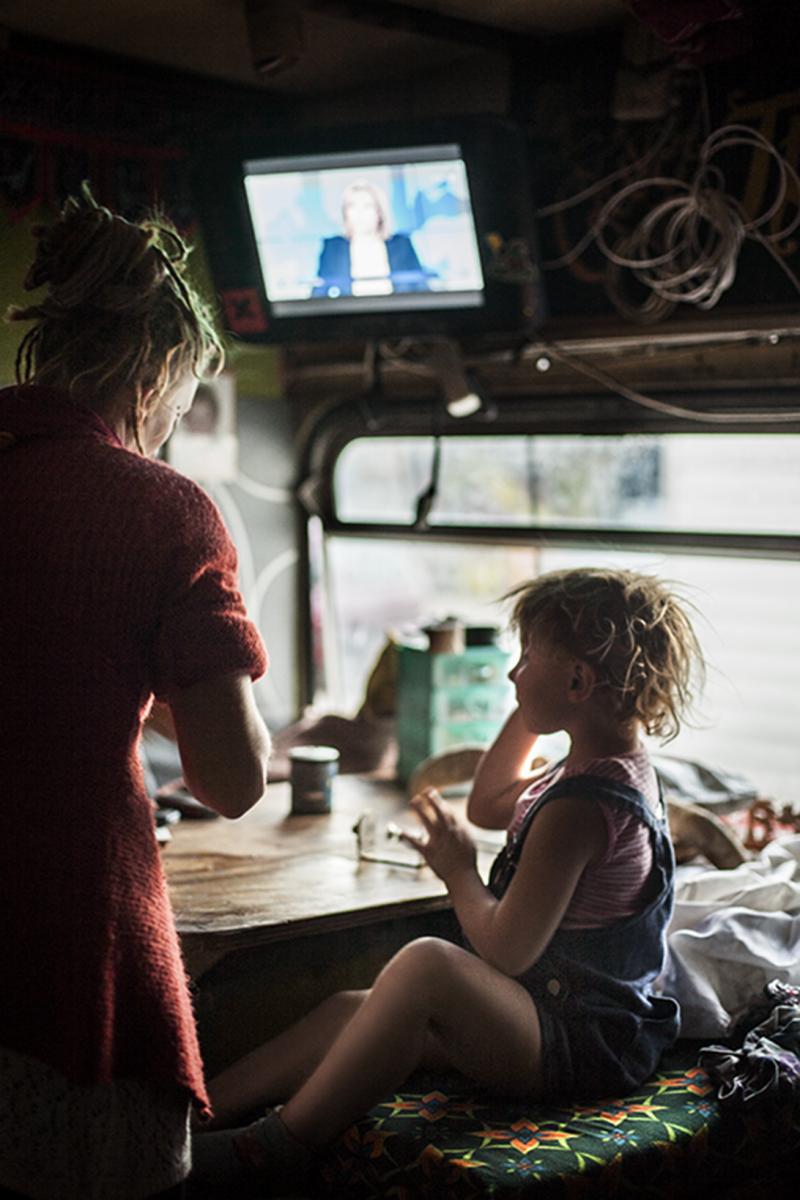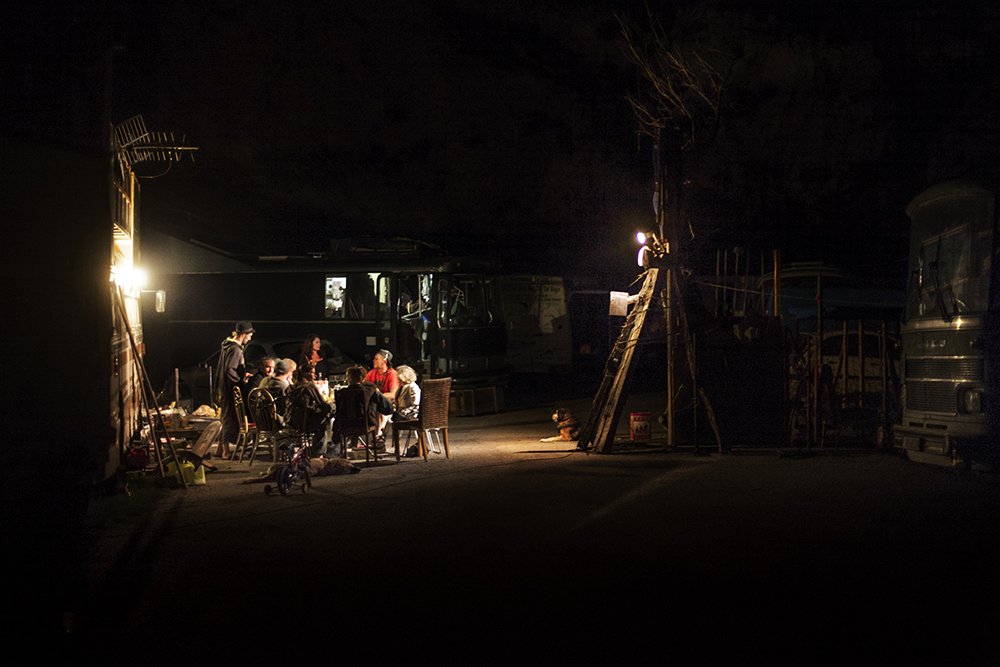
This Meeting sought to question the image of peri-urban areas as unliveable, unbearable and without qualities or urbanness. Researchers, professionals and artists defended their views of the different lifestyles these areas give birth to and potential they offer in terms of sustainable mobility. The audience has been invited to actively participate in the discussion.
> Please clic here to view the meeting's vidéo.
Maison Rouge : 10 Boulevard de la Bastille, 75012, Paris
The 2 nd meeting of the Mobile Lives Forum
Sustainable mobilities in peri-urban areas?
Which lifestyles in the alter-urbain
suburban-rural / citta diffusa / Zwischenstadt ?
Urban sprawl has been repeatedly criticized. Unlike compact cities – those hubs of European urban civilization that continue to be extolled by proponents of sustainable development, as they are allegedly more energy efficient - peri-urban areas are seemingly places of dispersion and ravenous consumers of energy, nature and farmlands. A built space lacking qualities of architecture and urban planning, bereft of veritable urbanity and amenities, the peri-urban is seen as a refuge for the modest middle classes that have been chased from the city by real estate prices, a place of weak, labile social ties where “self-segregation” thrives. It is also considered space of apolitical impotence reinforced by communal fragmentation and electoral volatility. A space created by the car, for the car, where the use of public transportation is not suited. Such arguments regarding peri-urban areas are regularly taken up by the media and certain renowned architects.
Today, researchers seem to be challenging this view by hypothesizing that this space is in fact much more complex and diverse, giving rise to a number of concepts to better grasp it: alter-urban, suburban, rings, périurbain, péri-urbain, citta diffusa, Zwischenstadt, etc. This could be another way for modern societies to spatialize themselves, not necessarily in conflict with compact cities but in coexistence and complementarity. This space would appear less harmful than they make it out to be. Maybe it could even become a place of scalability to the economic, energy and environmental crises of the 21 st century—in some ways a sustainable alternative to the urban.
We have explored this hypothesis in terms of mobilities by comparing the perspectives of researchers, artists, elected officials and transportation professionals. On what mobilities is peri-urban life today established? Can we envisage “good, sustainable lives” in these spaces, in light of energy, environmental and economic challenges? Does the notion of peri-urban will also still make sense? Should we use a different term?
This is what we have explored over these two days.
Could suburban areas hold the key to adapting to the economic, energy and climatic crises we face in the 21 st century? This is the question to be tackled by an exhibition and conference at La Maison Rouge in Paris from January 24-25, 2013. Organised by the Mobile Lives Forum, a transinstitute* for research and discussion on mobility, the event will bring together a wide range of views on the subject. Social science researchers, artists and transport providers will all be taking a fresh look at our knowledge of the suburbs, with a particular focus on what could be a space for good, sustainable lives in the future.
Inspired by the idea that art can help to better identify and clarify scientific problems, the event featured two exhibitions The exurban’s Vertigo and Myths and Travellers, encampments and city fringes. In addition, a conference entitled “Sustainable mobilities in peri-urban areas ?” explored this geographical ‘in-between’ that is the urban hinterland.
The exurban’s Vertigo and Myths – showing the complexity of tomorrow’s suburbs.
Created by its curator Irène Aristizábal, this exhibition of contemporary art offered a wide range of possibilities for discovering the different suburban ways of life. The desires and mythologies linked with suburban living came face to face with the actual or perceived realities of those present in these areas, who live there and who travel through them.
The exhibition was an opportunity to see the latest works of Maria Thereza Alves, Iván Argote and Pauline Bastard, Justin Bennett and Ariane Michel, along with artist Nicolas Boone’s revisiting of the Western movie genre on a stretch of railway from Corgnac-sur-l’Isle and Excideuil in France’s Dordogne region. Visitors could also watch “Perfectly Suited For You” (2005) and “Dreamland Cairo” (2010) videos created by the artist Solmaz Shahbazi in the gated communities of Istanbul and Cairo. The AVL City project developed in the port of Rotterdam by the design and artwork company, Atelier Van Lieshout, has also been represented.
A photographer by profession, he has joined up with architect Sophie Grellier and anthropologist Maude Reitz to explore the different worlds of these neo-nomads - under the scientific direction of sociologist Yves Pedrazzini. A study by the NoLand collective looks at the ways of life of those who have broken with the conventional sedentary lifestyle and have invented new family and community models, along with new spatial and professional points of reference.
The urban hinterland represent a space whose constantly changing characteristics lend themselves to atypical practices, and to an alternative habitat and mobility culture. In this sense, the travellers are representative of suburban life, in their desire to live on the edge of forests, roads. This kind of suburban living, as seen by NoLand, questions society’s norms and its ways of living in towns and cities, and also offers the germ of an idea for an innovative response to contemporary problems – one that includes both the technical and social aspects.



8:00-9:00
Welcome coffee
9:00-9:20
A presentation of International Meetings and of the Mobile Lives Forum
- Bernard Emsellem (president)
- Vincent Kaufmann (scientific director, Ecole Polytechnique Fédérale de Lausanne)
- Lionel Rougé (member of the Steering and Strategic Foresight Committee, Université Paris 1 Panthéon-Sorbonne)
09:20-10:30
Lifestyles in peri-urban areas and city suburbs as seen by TV series, Video montage commentated by Ioanis Deroide
(Author of the book Les séries TV. Mondes d’hier et d’aujourd’hui )
Analysis of media discourse on the peri-urban,
Gérald Billard and Arnaud Brennetot (Université de Rouen)
Peri-urban fantasies and realities: the example of the National Front vote,
Anaïs Lefranc-Morin (Université Paris 1 Panthéon-Sorbonne)
Peri-urban areas in the city? Ouseburn Valley: the peri-urban defined by the creative class
James Whiting (University of Sunderland)
Cartographic representation of statistical definitions of the peri-urban /citta diffusa / Zwischenstadt, etc.
Martin Schuler (Ecole Polytechnique Fédérale de Lausanne)
10:30-11:00
Break
11:00-12:00
The diversity of Europe's periurban areas. Round table discussion moderated by Lionel Rougé (Université Paris 1 Panthéon-Sorbonne) :
- Annie Fourcaut (Université Paris 1 Panthéon-Sorbonne)
- Emmanuel Roux (Université Joseph Fourier Grenoble 1)
- Paola Pucci (Politecnico di Milano)
- Thomas Sieverts (Europan)
- Martin Schuler (Ecole Polytechnique Fédérale de Lausanne)
12:00-12:45
Open discussion with the audience and Internet users
12:45-2:00
Lunch
2:00-3:00
Peri-urban mobilities: a comprehensive overview
Moderator: Jean-Pierre Orfeuil (Institut d’Urbanisme de Paris)
Multipolarization of jobs, population dynamics and the home-work mobility of peri-urban dwellers
Benoit Conti (Université Paris-Est)
Towards a diversification of mobility practices of peri-urban dwellers?
Claire Aragau (Université Paris Ouest) and Martine Berger (Université Paris 1 Panthéon- Sorbonne)
A typology of peri-urban lifestyles
Rodophe Dodier (Université d'Aix-Marseille)
3:00-3:30
Open discussion with the audience and Internet users
3:30-4:25
Mobility in peri-urban areas at different stages of life
Moderator: Francis Beaucire (Université Paris 1 Panthéon-Sorbonne)
The unequal mastery of mobility of young peri-urban dwellers,
Alix Cariou and Jean Teiller (Institut d’Aménagement et d’Urbanisme Ile-de-France)
The mobility of telecommuters in peri-urban areas of Toulouse,
Patricia Sajous (Université du Havre)
The mobility of seniors in peri-urban Montreal: using the urban environment to promote more active aging,
Paula Negron-Poblete (Université de Montréal)
4:25-4:55
Open discussion with the audience and Internet users
4:55-5:25
Break
5:25-6:20
Peri-urban dwellers and energy issues
Moderator: Francis Beaucire (Université Paris 1 Panthéon-Sorbonne)
The tripe vise of peri-urban unsustainability: Energy use and economic constraints, social norms and environmental demands
Leslie Belton-Chevallier (Institut français des sciences et technologies des transports, de l’aménagement et des réseaux) and Yves Jouffe (Ecole Nationale des Ponts et Chaussées)
Energy vulnerability and the coping strategies of peri-urban dwellers’,
Mireille Bouleau and Lucile Mettetal (Institut d’Aménagement et d’Urbanisme Ile-de-France)
The resourcefulness of poor peri-urban households in Zimbabwe and their energy and transportation needs
Innocent Chirisa (University of Zimbabwe)
6:20-6:50
Open discussion with the audience and Internet users
6:50-7:05
The peri-urban as seen by one artist: Justin Bennett (United Kingdom)
Moderator: Irène Aristizabal , curator of the “The Exurban’s Vertigo and Myths”exhibit
7:05-7:15
Presentation of the “The Exurban’s Vertigo and Myths” exhibit
Irène Aristizabal , curator
Presentation of the “Travellers, settlements and city fringes” exhibit
Yves Pedrazzini (Ecole Polytechnique Fédérale de Lausanne) and Ferjeux Van der Stigghel
7:15-10:00
Soirée and cocktail party
7:45-8:30
Welcome coffee
8:30-8:45
The future of peri-urban areas as seen by an artist
Andreas Angelidakis (Greece)
8:45-9:00
Are the advantages of the compact city being undermined by leisure mobility? A comparative analysis of Paris and Rome
Hélène Nessi (Bureau de recherche 6-t)
9h00-10:15
Dispute: Can peri-urban areas withstand the energy, economic and climate crises?
- Jacques Lévy (Ecole Polytechnique Fédérale de Lausanne)
- Eric Charmes (Université de Lyon)
- Yves Crozet (Université de Lyon)
- Hélène Le Teno (Carbone 4)
10:15-11:00
Open discussion with the audience and Internet users
11:00-11:20
Break
11:20-12:10
Peri-urban areas’ potential in terms of changing ways of moving
Organizing the dispersed city around train stations: beyond the model, what development practices to employ at the local scale?,
Juliette Maulat (Université Paris 1 Panthéon-Sorbonne)
The potential of bicycle use in peri-urban areas
Frédéric Héran (Université de Lille 1)
Malls in urban fringes: conditions for alternative forms of mobility,
Xavier Desjardins (Université Paris 1 Panthéon-Sorbonne)
What is the future for cars in peri-urban areas?
Jean-Pierre Orfeuil (Institut d’Urbanisme de Paris)
12:10-12:45
Open discussion with the audience and Internet users
12:45-2:00
Lunch
2:00-3:10
Public policies for an alternative to solo car use in peri-urban areas
The foundations of collective mobility: new “public” mobility experiences in urban peripheries
Marc Dumont (Université de Rennes 2)
Speed(s) War(s)
Yan le Gal (Agence d'urbanisme de Nantes)
3:10-3:45
Open discussion with the audience and Internet users
3:45-4:45
The point of view of three experts :
- Jean-Marc Offner (Agence d'urbanisme Bordeaux métropole Aquitaine)
- Laurent Thévoz (Ecole Polytechnique Fédérale de Lausanne)
- Marie-Flore Mattei (PUCA - Ministère de l’Ecologie, du Développement Durable et de l’Energie)
Starting at 9 am tomorrow and at 8h30 on Friday, you can follow live video coverage of the Forum’s 2 nd International Meeting “Is sustainable mobility possible in peri-urban areas?”
To participate live in the Meeting’s discussions create your own account on our website or use your Twitter account and the hashtag #mob-periurbain , our account being @FViesMobiles
For the Mobile Lives Forum, mobility is understood as the process of how individuals travel across distances in order to deploy through time and space the activities that make up their lifestyles. These travel practices are embedded in socio-technical systems, produced by transport and communication industries and techniques, and by normative discourses on these practices, with considerable social, environmental and spatial impacts.
En savoir plus xA lifestyle is a composition of daily activities and experiences that give sense and meaning to the life of a person or a group in time and space.
En savoir plus xTo cite this publication :
(11 January 2013), « Sustainable mobilities in peri-urban areas? », Préparer la transition mobilitaire. Consulté le 18 May 2025, URL: https://forumviesmobiles.org/en/forum-meetings/567/sustainable-mobilities-peri-urban-areas
Other publications